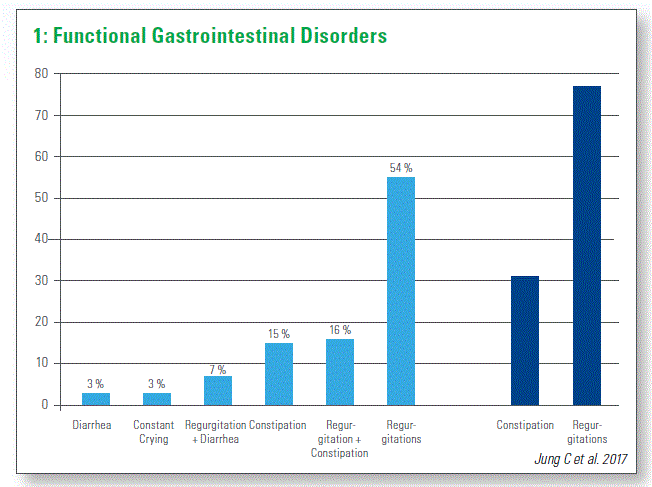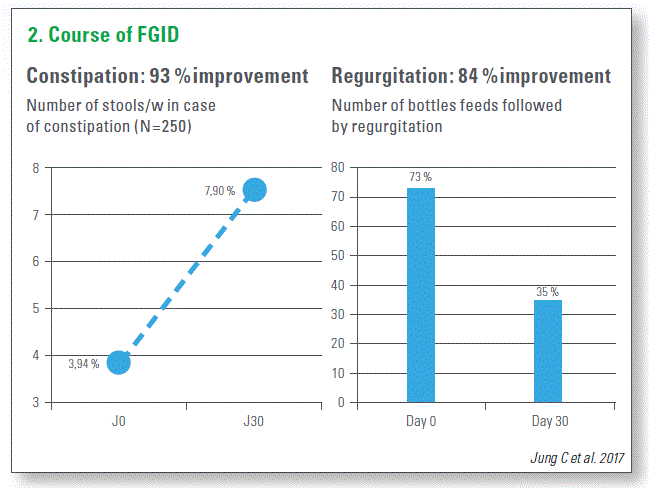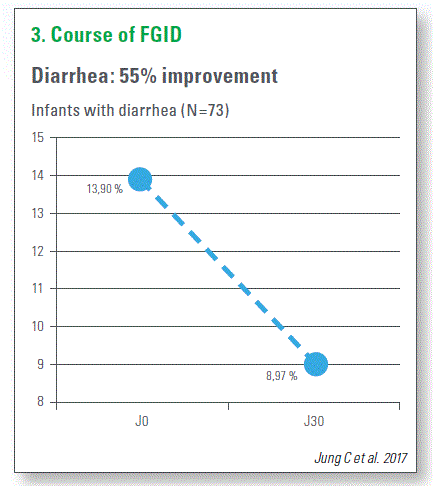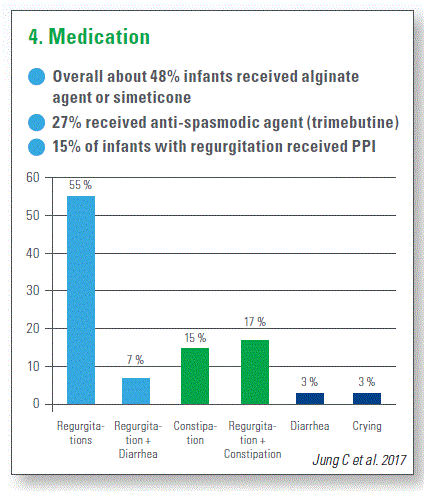Quality of Life of Infants with FGID: A Large Prospective Observational Study
Quality of Life of Infants with FGID: A Large Prospective Observational Study
Camille Jung
Functional gastrointestinal disorders (FGID) are very common during infancy, leading to frequent medical consultations. Parents are often worried about the health of their child and they want appropriate medical management. For the most of the times, it is not so easy and the family’s quality of life could be impaired.
The aim of this large observational prospective study was to assess the quality of life (QoL) and clinical management of infants with FGID. There are some studies on QoL in children. In the study by Youssef N. et al. (2006), the quality of life score was much lower in children with functional abdominal pain compared to healthy children and even compared to children with IBD or GERD. However, we have few data on quality of life in infants. That is why we wanted to conduct this study and we had different aims:
- To evaluate the quality of life of infants with FGID,
- Outcome of the FGID symptomatology and QoL
- Medical management
This is a prospective observational and longitudinal study conducted in France between May 2014 and April 2015*. Children where followed during one month to medical consultation, and QoL was assessed at inclusion and at day fifteen using the QUALIN questionnaire. Infants < 5 mo where included: they should be at least partially fed with an infant formula and they should consult for the first time for FGID. Infants with allergy or exclusively breastfed infants were excluded.
The investigators were pediatricians in private practice and they were located in different parts of France. So we used a 34-item QUALIN questionnaire, which is available in French and in many other languages such as English, Spanish, Italian and even Russian. It has been specially developed to evaluate the quality of life of infants. It includes 4 subcategories: behavior and communication, the ability to remain alone, the family environment, and the psychological and somatic wellbeing of the child.
Primary endpoint was a comparison of the Qualin score at day 0 and day 15; and we basically used the paired-student test. We also compared the evolution of the symptomatology between inclusion and day 30.
Overall, 1122 infants were recruited; 307 were excluded from the analysis for different reasons: missing questionnaires; infants who didn’t meet the inclusion criteria; time between the visits not respected. Finally, we had data for 815 infants with functional GI disorder. These data were analyzed.
At inclusion, we had 52 percent male infants (426/387) with a mean age at diagnosis of 2.1±1.2 mo. 30% were partially breastfed, whereas 4% had an early weaning. The main symptoms were regurgitation in ¾ of the included infants, followed by constipation in 31%. Some had diarrhea (10%) and constant crying (3%). The question was about the duration of the crying (>3 hours per day) which could explain this low percent of constant crying. About 20% had a mix of different symptoms: regurgitation plus diarrhea or regurgitation plus constipation. The principal outcome was the evaluation of the Qualin score between day 15 and day 0; the score increased from 27 to 38 and it was significant (Chart 1).

QoL was better after medical management. And this was also the case for all the subcategories of the score, notably for the subcategories “behavior and communication” and “psychological and somatic wellbeing.”
Concerning the course of FGID, the symptomatology improved in most of the infants. This was the case for constipation, with an increase of the numbers of stool/weight and also for regurgitation with a diminution of the frequency, intensity and volume of regurgitation for most of the infants. Symptomatology of diarrhea improved in 55% of the infants, associated with the diminution of the number of stools/wk; and the number of infants with constant crying dramatically diminished to 12% at day 30 (Charts 2/3).


The proposed medical management was, first, a change of infant formula for an infant formula targeting the FGID symptoms. Some pediatricians gave lifestyle and dietary advice, but only in 34% of the cases. Some prescribed medication to about ¼ of the cohort, some prescribed probiotics or plant extracts as first prescriptions.
The infant formulas prescribed were anti-reflux formula (77% in case of regurgitation), acidified formula with low lactose level and probiotics for constipation (79% in case of constipation), low lactose level and probiotics for diarrhea (30%) / infant colic (56%). In most cases, the tolerance was considered very good (95% of cases).
The rate of medication was surprising high notably in case of regurgitation. About half of these infants received alginate agent or simeticone, 27% received anti-spasmodic agent (trimebutine) and 15% of infants with regurgitation received PPI, which was surprising for us because the investigators were pediatricians (Chart 4).

Concerning the dietary and lifestyle advice, they were given in 34% of the cases and among them some pediatricians advised the anti-Trelenbourg sleeping position (44%) – that was surprising be- cause it is not recommended – abdominal massages (16%), changing of water or early weaning (11%).
We performed a multivariate analysis to identify factors that were independently associated with an increase of the QoL score and it appeared that at a younger age (< 3 mo), partial breast feeding and dietary advice were associated with an increase of quality in the Qualin score.
Conclusion
- QoL rapidly increased after medical management, whatever the FGID at inclusion was
- There was no control group to compare the quality of life at inclusion
- This underscores the importance of dietary advice and reassurance for the parents. And the recommendation to continue with partial breastfeeding was also confirmed in this study.
- High rate of medication prescriptions…even if they are not recommended.
Because QoL is the principal target of clinical care, we think this could be a useful tool to help parents and also practitioners manage these disorders and it could be used regularly in consultation, first visits and then the next appointment to follow the evaluation.
